Waverley Cemetery in the suburbs of Sydney, New South Wales, Australia is consistently ranked as one of the most beautiful cemeteries in the world – and it’s a great place to learn about Australian gravestone symbols.
Waverly Cemetery is perched on high cliffs overlooking the Pacific Ocean against a backdrop of rolling green hills. More than 90,000 people have been buried at this stunning 16-hectare (40-acre) site.
Most of the monuments at Waverley were created in the mid to late 1800s and were sculpted from white Carrara marble. The white gleaming angels, columns, and human figures stand out against the brilliant turquoise background of the sky and sea. In more recent years, gravestones made of rose and black granite have been added.
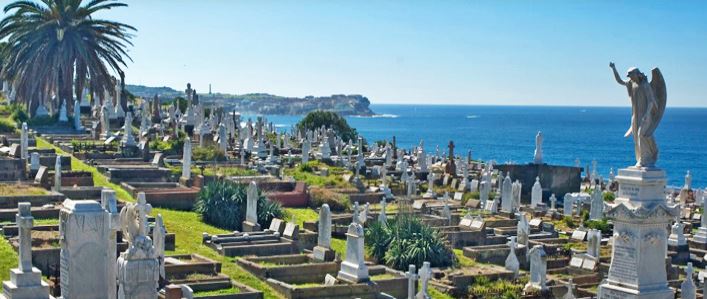
Notable Burials
The gravestone symbols on the monuments are clues to the past lives of those buried there. Some of the notable people buried at Waverley Cemetery who helped to shape Australia include:
- aeronautical pioneer Lawrence Hargrave
- Olympic swimmer Fanny Durack
- New South Wales Premier Sir James Martin
- Jules Archibald, founder of Australia’s longest-running magazine The Bulletin
- 19th-century writer Louis Becke
- poet and author Dorothea Mackellar
- rugby player Peter Burge
Whether you are able to get out and take photos in sunny Waverley Cemetery by the sea, or you will soon be transcribing the names and dates from those gravestones, you’ll enjoy the experience more when you understand some of these Australian gravestone symbols.
Australian Gravestone Symbols: Angels

Angels in the cemetery represent the belief that departed loved ones continue to live beyond mortality and will watch over those who have been left behind.
The sentiments on this epitaph reflect the sweet innocence of this angel. She has an armload of flowers in one hand and is dropping petals with the other. The epitaph reads in part:
“In sad but loving memory of our dear daughter and our dear sister . . . who was called home . . . aged 15 years. The sadder the parting, the sweeter the meeting.”
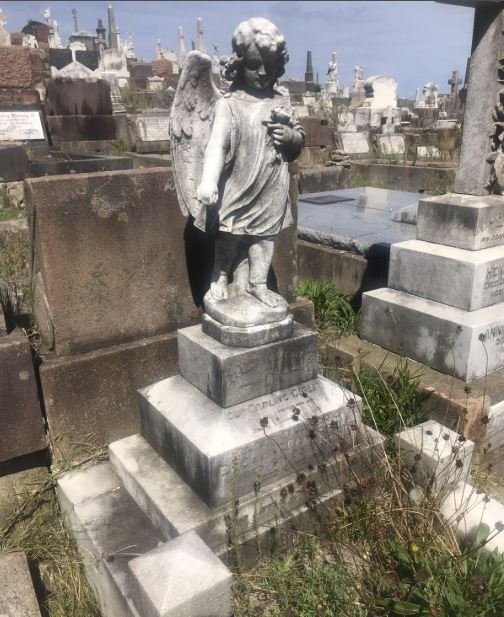
Like the statue above, this little angel has a bouquet of flowers in one hand and is dropping flower petals with the other.
When people died a century or more ago, their bodies often laid on their beds in their own homes until family members and friends had a chance to visit. There were no chemicals for embalming yet, no washing machines or dryers for the sheets, and no Febreze either! So flower petals – usually roses – were scattered on the bed and over the body to mask the odor that grew stronger each day.
Over time, the scattering of rose petals evolved into a lovely symbol. Flowers, from buds to full blooms, are associated with life, vitality, and beauty. Then as they wilt and die, flowers represent the fragility of life and the passage from life to death. Even today, scattering flower petals at a funeral is a common tradition in Australia and around the world.
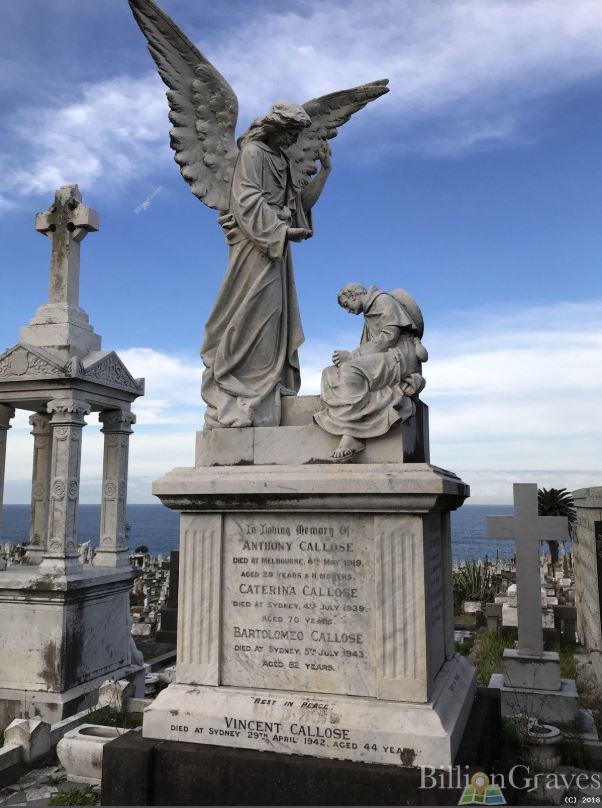
This striking gravestone is a legacy to Anthony Callose, a 28-year-old young man, and his parents.
The angel’s hands are extended in a symbolic token. One hand has the palm forward and fingers pointing upward, receiving a blessing from heaven. The other hand is extended, with the palm down, to pass that blessing on to the mortal being.
It is significant that the angel is so much larger than the human figure. This shows that the angel had greater power and could provide strength and help.

The angel that rests on top of this monument is pointing heavenward, indicating that the departed one has gone to heaven. There is a scroll in the angel’s left hand, a written record that has been kept of the deceased’s mortal deeds that will be delivered to God.
This is the grave of Jack Woodman, who died at age 35. It was commissioned by his wife who selected the inscription, “In loving memory of my dearly loved husband.”
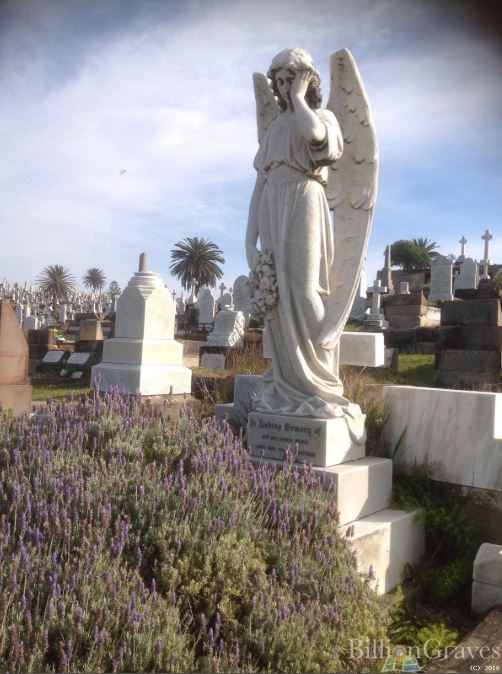
Every time I look at this weeping angel I am nearly moved to tears myself. She is so lifelike. Her beautiful draping gown puddled at her feet and the flowers hanging at her side add to the dramatic effect of her sorrow.
This statue is symbolic of a grief so deep that it makes even the angels weep.
Australian Gravestone Symbols: Crosses
Calvary Cross
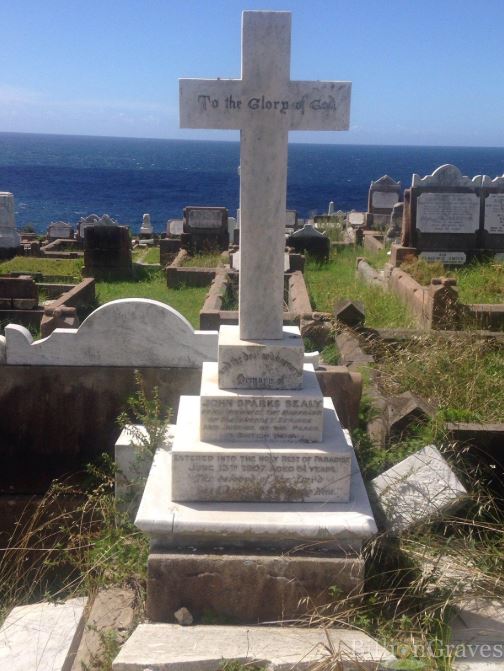
This cross, mounted on a platform of three steps, is called a Calvary Cross. The ascent represents the climb Christ made to Calvary.
The three steps are a reminder of the three principles of faith, hope, and charity or the three members of the Godhead: Father, Son, and Holy Ghost.
Bontonee Cross
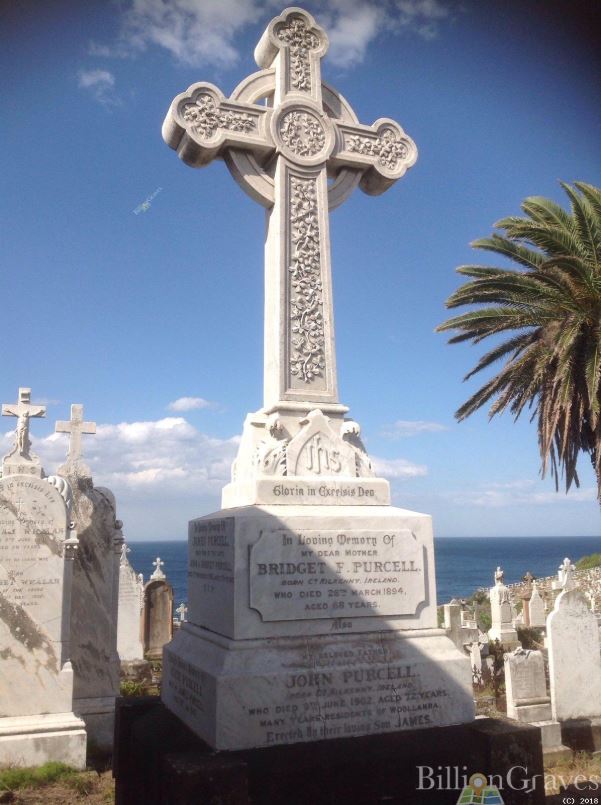
This is a bontonee cross. Botonee is a word from the middle-French language meaning button. It has a cluster of three balls, knobs, or buttons at the end of each arm.
British knights and nobles of the middle-ages fashioned the bontonee cross, as a variant on the traditional straight-lined cross, so that they would have a unique symbol for their shields and flags that still represented Christ.
To learn more about the history of the bontonee cross check out BillionGraves’ blog post, Understanding Cemetery Crosses, by clicking HERE.
Notice in the photo above that the letters IHS in inscribed below the cross. These are the first three letters (iota-eta-sigma) of the name Jesus when it is written in Greek: ΙΗΣΟΥΣ.
Intertwined IHS Symbol

This cross combines some symbols from two of the photos above.
The first is IHS. As mentioned, IHS stands for the first three letters (iota-eta-sigma) of the name Jesus in Greek: ΙΗΣΟΥΣ. On this gravestone, the I, the H, and the S are intertwined, making the symbol look like a dollar sign.
The second symbol is the triple-tiered steps which are symbolic of the Father, Son, and Holy Ghost.
Sacred Heart Celtic Cross

Australia is home to the third-largest population of Irish migrants in the world, about 2 million people, or 10 percent of the total population. So it makes sense that many of the gravestones in Australian cemeteries have Irish symbolism.
This gravestone combines the Latin Cross in the forefront and a circle, representing the sun, at the back. It is called a Celtic Cross and is a combination of symbols from ancient pagan sun-worshipers as well as a Christian symbol. Irish legends claim that Saint Patrick, Ireland’s patron saint, introduced the Celtic cross in Ireland as a way to guide pagans to Christ.
The cross is covered in shamrocks, an Irish symbol of faith, hope, and luck. Saint Patrick is said to have used the shamrock as a metaphor for the Father, Son, and Holy Ghost.
At the center of the cross is an anatomical representation of a heart. This symbol shows that the deceased was Catholic. It represents the great love that Jesus Christ had for others that He poured out from his heart to all around Him.
While many Christian religions revere the great love that Jesus had for others, it is uniquely Catholic to pray to the physical heart of Jesus. Catholics are also encouraged to be loving in their own hearts like the Sacred Heart of Christ.
To learn more about Irish Gravestone Symbols click HERE.
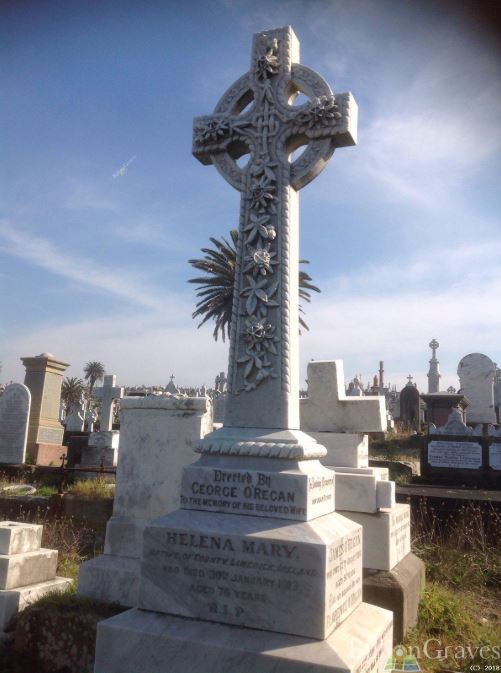
To learn more about cemetery crosses, click HERE to read Understanding Cemetery Crosses, BillionGraves’ most popular blog post.
Click HERE to see another IHS gravestone in an Australian cemetery on the BillionGraves website.
Australian Gravestone Symbols: Draped Urn
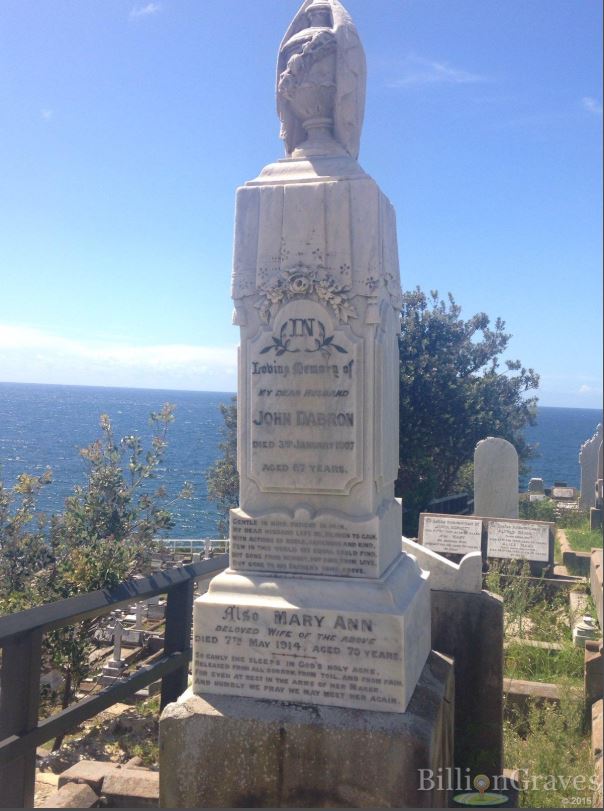
The urn symbolizes death itself. In the mid to late 1800s, Australians followed the example of the ancient Greeks who used the urn as a symbol of mourning since it was often used as a repository for the ashes of the dead.
It is somewhat of an irony that the urn was such a popular 19th Century Australian gravestone symbol though because very few people were actually cremated when the urn motif was at the height of its popularity.
Cremation was practiced anciently, then made illegal during the Middle Ages, only to be restored again in modern times.
In 1891, South Australia became the first state to legalize modern cremations. But then for a full decade, there was no place to have bodies cremated.
Gradually, the idea took hold and by 1901, Australians had built their first modern crematorium in the West Terrace Cemetery in the South Australian capital of Adelaide.
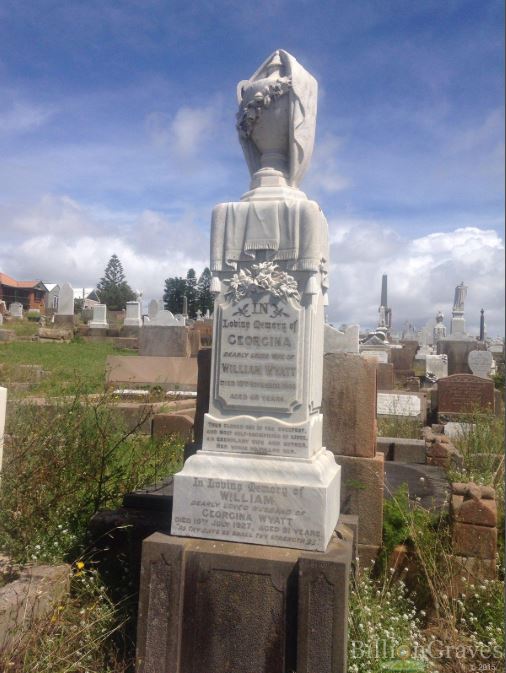
The drapery over the urn and column symbolizes the shedding of earthly clothing or burial shroud as the departed leaves mortality for the afterlife. For those left behind, it symbolizes sorrow.
There is a difference between the draped cloth that is over the urn and the drapery that is over the column. The lower drapery has fringes on the corners, which signifies that is it veil – like the veil that separates earth from heaven and life from death.
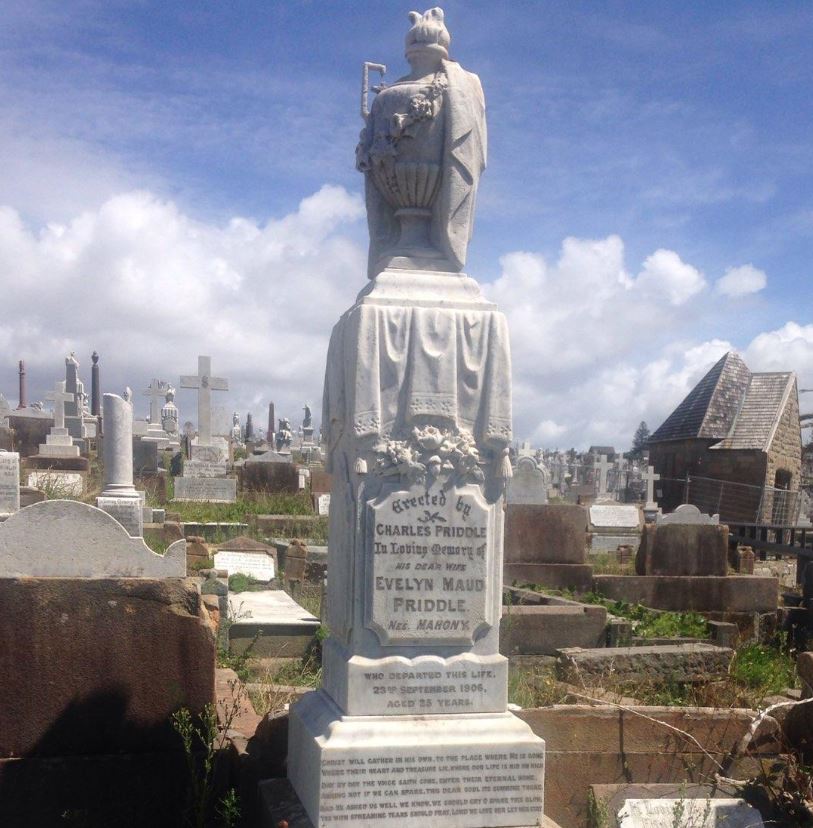
This urn has a flame emanating from the top, a symbol of eternal remembrance and religious zeal.
Australian Gravestone Symbols: Flowers and Plants
During the Victorian era in Australia, as well as many other parts of the world, each species of flower had a specific meaning. Giving someone a bouquet of flowers that had been carefully and intentionally chosen could be like writing them a letter – usually a love letter.
The practice of using flowers and plants to send messages was carried over to gravestones. Once you understand the meaning behind different types of blossoms, you’ll know what the family members had to say about their departed loved ones.

There is ivy engraved on this headstone which, being an evergreen plant, represents eternity, fidelity, and a strong affectionate attachment to the deceased.
The epitaph says, “God will mend the broken chain, as one by one, we meet again.”

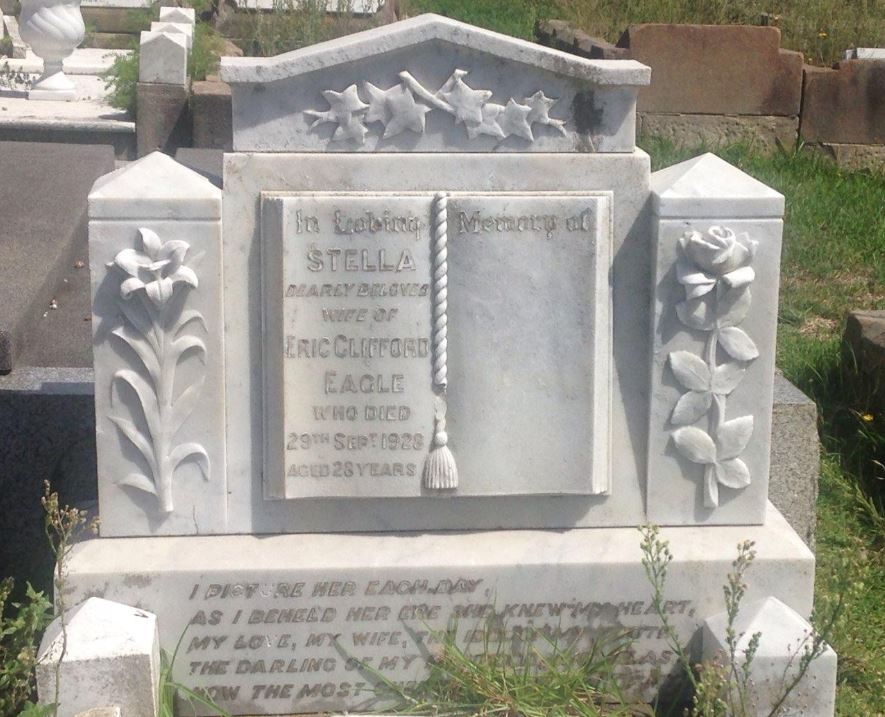
This gravestone has three botanical symbols: the ivy, a lily, and a rose.

Lilies are a symbol of innocence, chastity, and purity. They are often associated with Mary, the mother of Jesus, and are used on women’s gravestones.
Lilies can also represent innocence being restored to a soul at death.
A single rose indicates an abiding love, or “I love you still”. The red rose is well-known, even today, as a symbol for true love. While a yellow rose is symbolic of friendship and joy.
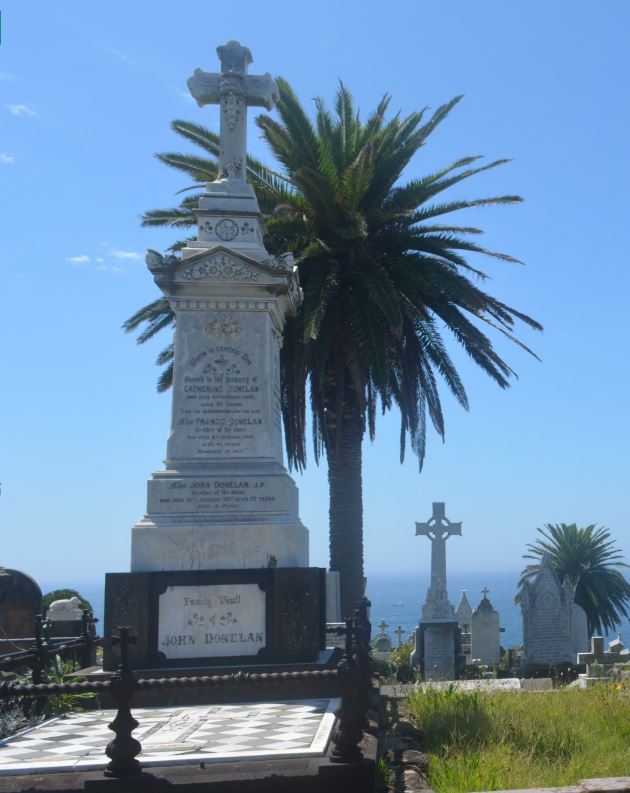
There are flowers on the face of this gravestone, primroses and forget-me-nots. Primroses meant “I can’t live without you”. And the tiny aqua forget-me-nots were “true blue”, signifying faithful love and memories.
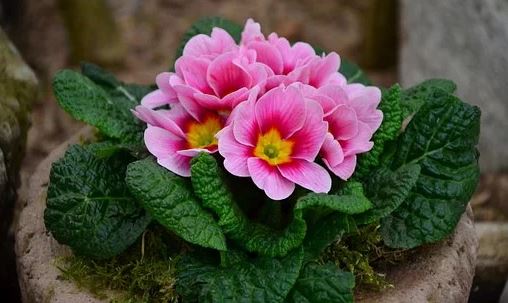

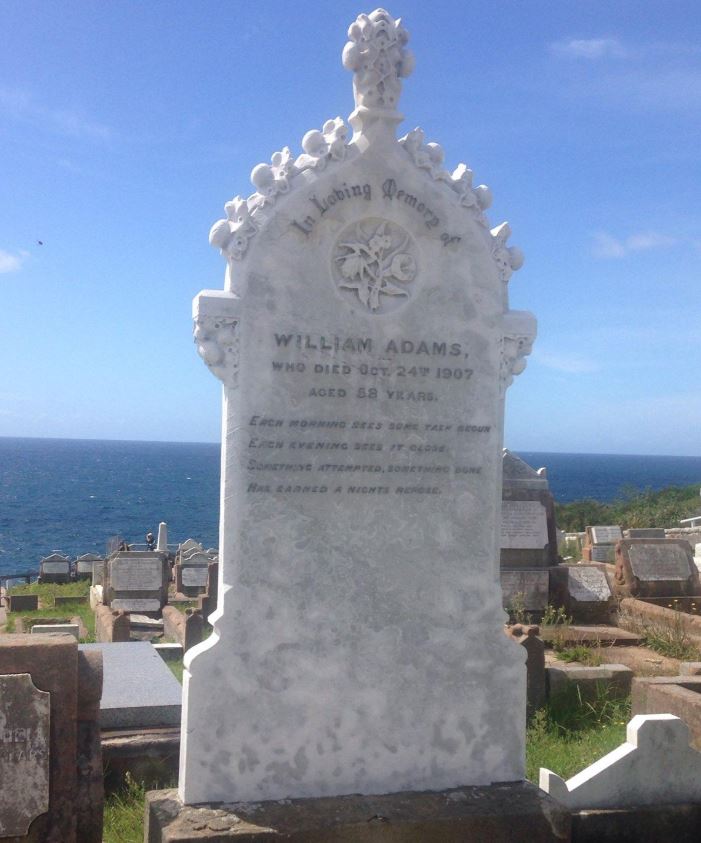
This gravestone is covered with morning glory buds and blossoms. Morning glory was a flower that symbolized the resurrection during the Victorian era in Australia.

Morning glory buds are closed during the night, but at dawn, the combination of light and temperature causes them to open, a nice parallel to those who have passed away but will open their eyes to a new life.
Australian Gravestone Symbols: Masonic
Freemasons, with more than 6 million members worldwide, are the largest and most widely recognized fraternity. Members are commonly referred to as Masons and leaders become Master Masons.

As an occupation, a mason is one who uses bricks, concrete blocks, or natural stones to build structures. During the Dark Ages, most men were serfs to a king so their ability to travel was very limited. But men who were masons were free to move about so that they could work on construction projects in various locations. Thus they came to be known as freemasons.
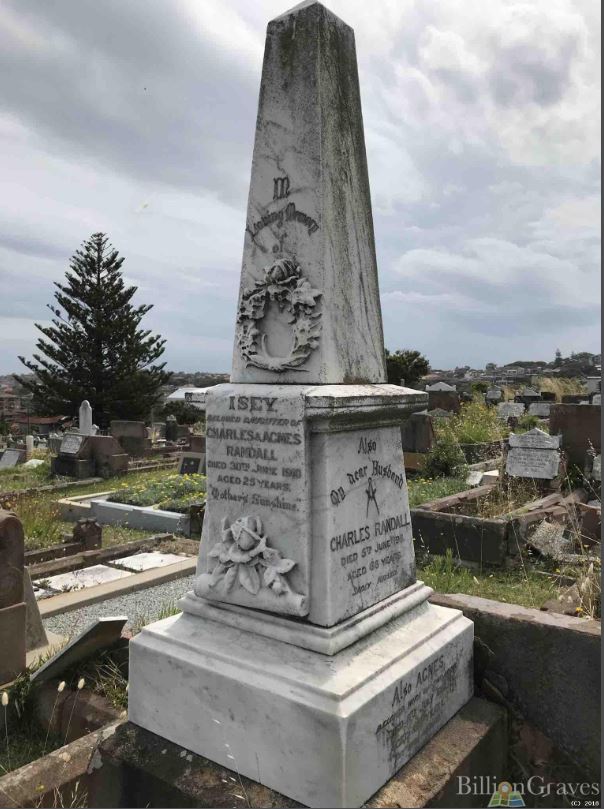
These freemasons were accomplished tradesmen, taking as long as 10 years to fulfill their apprenticeship and receive a degree. So they carefully guarded the secrets of geometry that they had learned as a part of their trade. Freemasons even identified one another with secret symbols and handshakes to be sure their coworkers were qualified.
Many of the beliefs and symbols of the Freemason fraternity are said to have been preserved from ancient times by the masons who worked on Solomon’s temple.

The most widely recognized symbol of Freemasonry is the square and compass with the letter G at the center.
The letter G stands for both God and geometry. A belief in God is the main requirement for Freemasonry membership. And geometry is said to help unravel the wonders and mysteries of nature and the universe.
To learn more about the gravestone symbols used by fraternities click HERE.
Australian Gravestone Symbols: Seafaring
It makes sense that people who are buried on an island continent, such as Australia, would have many symbols related to the sea in their cemeteries.

The inscription on this ship’s wheel refers to “crossing the bar”.
The nautical term “crossing the bar” means to pass over a sandbar at the mouth of a harbor when setting out to sea. “Crossing the bar” has also come to symbolize the passage from mortal life by death into eternal life.
In 1889, the poet Alfred Lord Tennyson wrote,
“. . . may there be no sadness of farewell, when I embark,
For though from out our bourne of time and place,
The flood may bear me far,
I hope to see my Pilot face to face
When I have crossed the bar.”
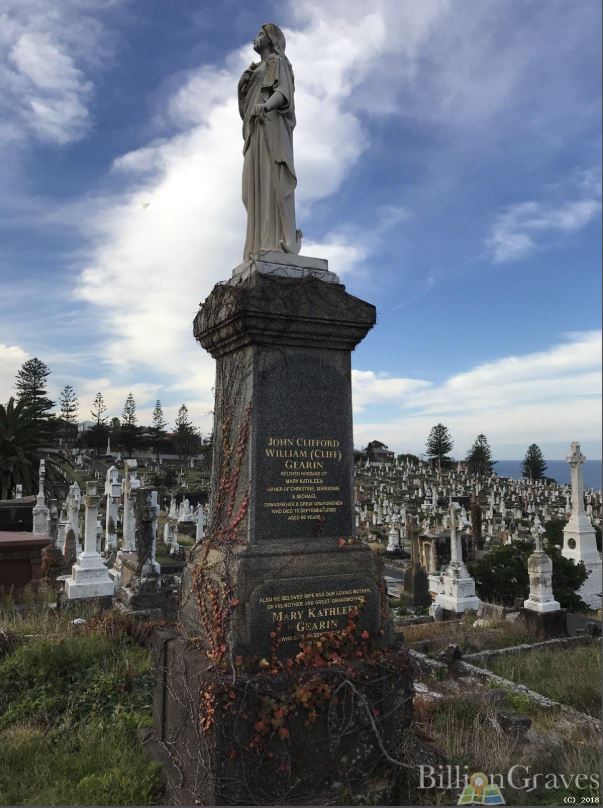
How many sailor’s wives have stood on the shore, looking out to sea, waiting for their spouse to return from a voyage? This statue depicts a woman leaning on an anchor.
Anchors are a symbol of hope. Just as an anchor lends stability to a ship in a storm, hope lends stability to people during the trials of life.
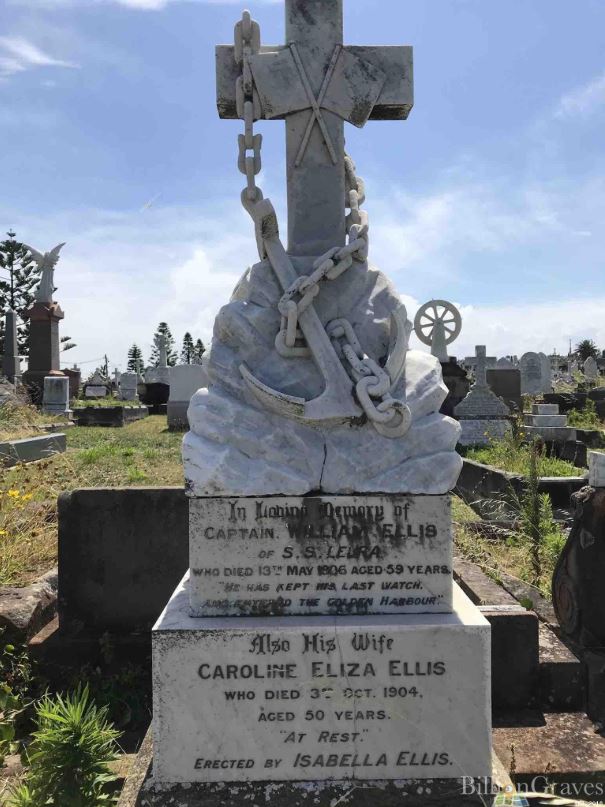
This is the gravestone of Captain William Ellis. Ellis spent most of his life aboard a ship, starting his career aboard the ship Cossiterides at the age of 13.
Ellis had a remarkable experience aboard the Cossiterides. When the crew was bound from Newcastle, Australia to Manila, Phillippines a hurricane struck and the ship not only lost its mast but also sprang a leak. For ten days, all hands were kept at the bilge pumps. Finally, a Man-of-War ship took the vessel in tow and ferried her to safety in the Manila Harbor.
There are several maritime symbols on Ellis’ gravestone. The anchor is a symbol of hope, steadfastness, and eternal life.
The crossed flags are a symbol of maritime signalmen. Nowadays, in the 21st century, signalmen transmit messages via radio, fiber optic, microwave, information systems, and satellite links. But during the 19th and 20th centuries, servicemen in the Royal Australian Corps of Engineers transmitted messages with flashing lights and flags.

This epitaph on this monument reads,
“In loving memory of Captain William Ellis of S.S. Leura . . . He kept his last watch and entered the golden harbor.”
Australian Gravestone Symbols with Unusual Epitaphs
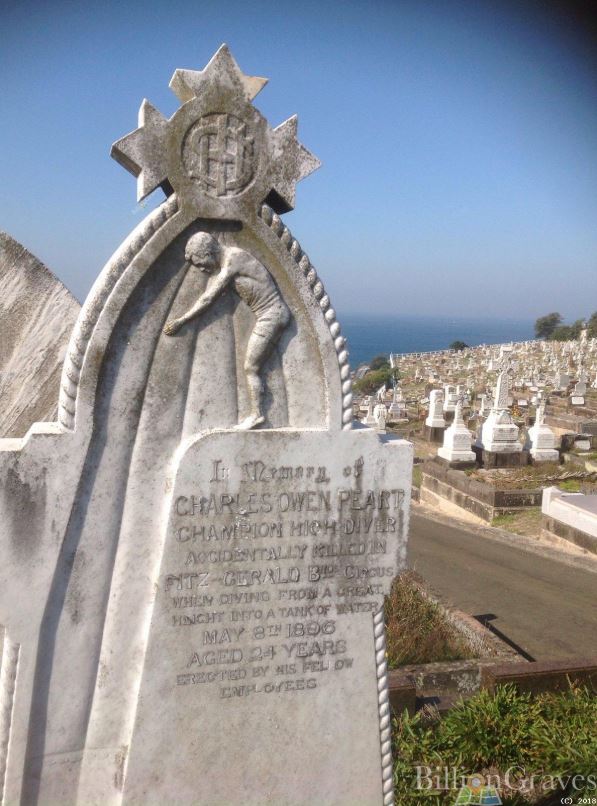
Look at the top of this gravestone and you will see the familiar dollar sign, which is actually the first 3 letters of Jesus’ name, I, H, and S intertwined. So right away, you know that the person buried here is a Christian.
The crowns surrounding the IHS represent the glory of life after death and the departed one’s ascension into heaven. They also symbolize immortality, victory, and righteousness.
But of course, what is most fascinating about this gravestone is the diver. Charles Owen Peart was a champion high diver employed by the Fitz-Gerald Brothers Circus to plunge from a 50 to 60-foot platform into a hole in the ground. The hole – lined with wooden planks and canvas – was filled with about 5 feet of water the night before his performance.
Just before being hoisted into the air with a rope to the platform, Peart examined the tank. He commented that some of the water had leaked out, but felt it would be fine. That morning the depth was only about 3 feet.
From the platform, Peart announced with his usual showman’s flair that the tank “looked awfully small.” Then he plunged into the tank, grazing the side slightly, but then stood up and walked to the dressing room with a little assistance. There, he commented to those around him that he would dive again the next night.
A short while later, Peart went to the hospital to be examined, where he died of internal injuries.

A broken column represents a life that has been cut short. The wreath indicates victory over death.
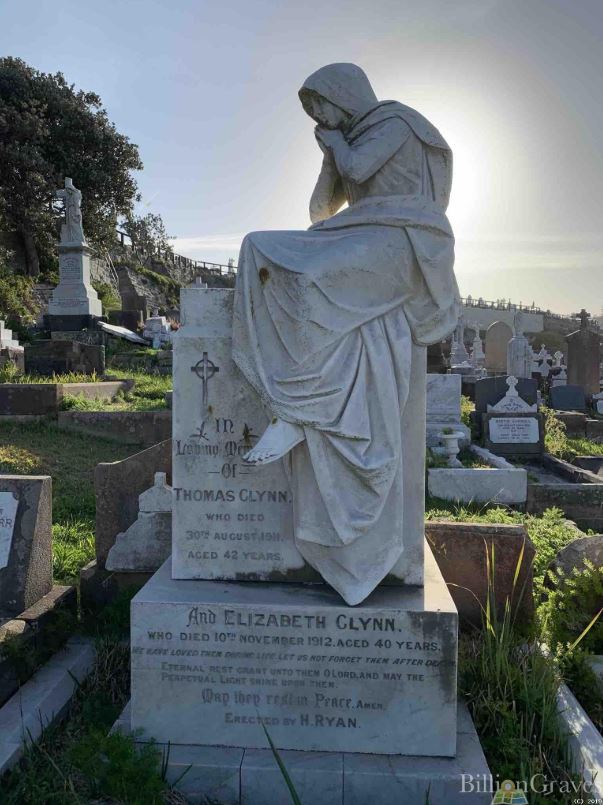
This beautiful statue is a symbol of eternal rest. It matches the epitaph at the bottom that says, “Eternal rest, grant unto them, O Lord, and may the perpetual light shine upon them.”
It also adds the following thought that reflects the sentiments of BillionGraves users, genealogists, and family members around the world:
“We have loved them during life, let us not forget them after death.”
Learn More
Learn more about gravestone symbols by clicking HERE and HERE.
Volunteer
If any of you Down Under would like to take photos of gravestones or would like help planning a BillionGraves cemetery service project, please send an email to Volunteer@BillionGraves and we’ll be delighted to help you! (Even if you live someplace else, let us know, we’ll help you too!)
Happy Cemetery Hopping!
Cathy Wallace


